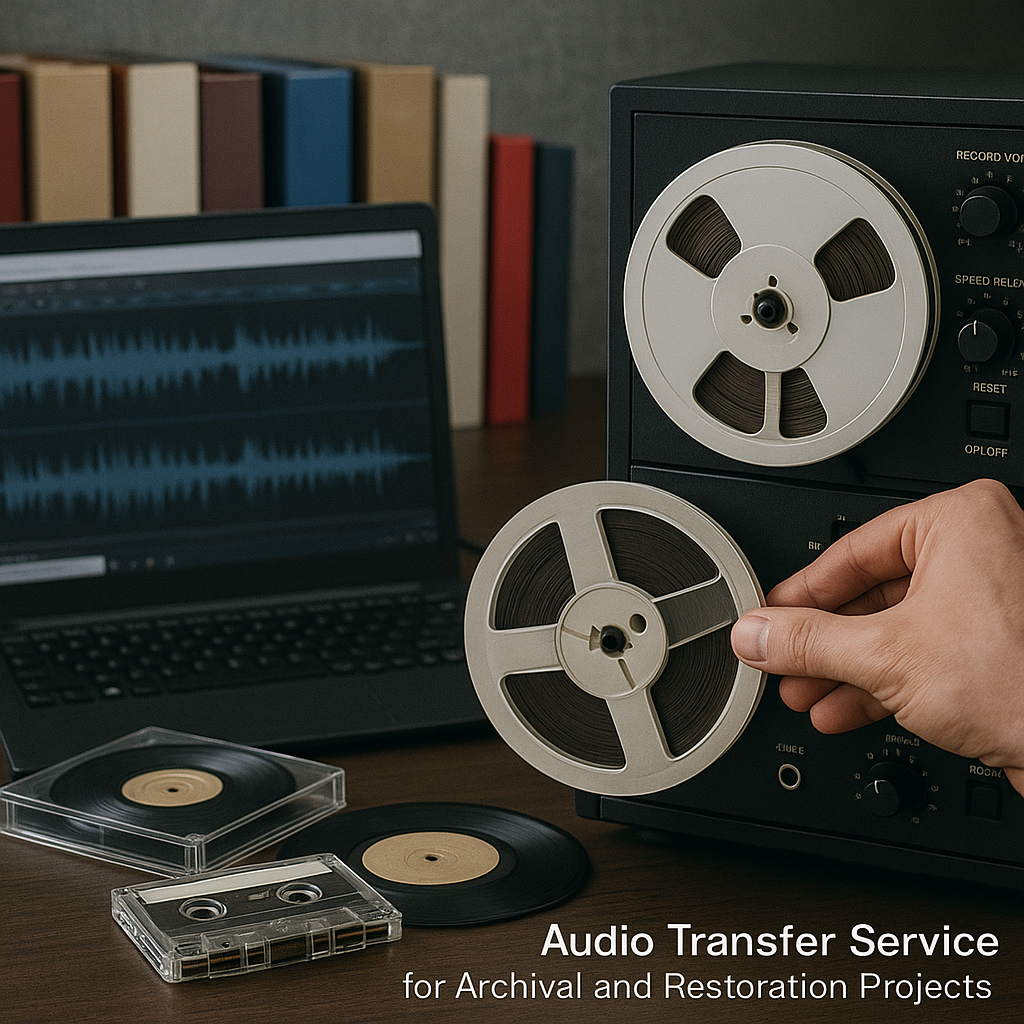Benefits of Using a Professional Audio Transfer Service for Archival and Restoration Projects

Introduction
Archival and restoration projects play a crucial role in preserving our cultural, historical, and personal heritage. Institutions such as libraries, museums, academic departments, legal offices, estates, and even private collectors often find themselves in possession of analog audio recordings like cassettes, reel-to-reel tapes, vinyl, and more that are deteriorating with time.
These recordings may include oral histories, rare interviews, academic lectures, legal testimonies, or treasured family narratives. For such valuable content, DIY conversions simply won’t suffice. That’s where professional audio transfer services come in. These specialists ensure that the digitization and restoration process is done accurately, securely, and with long-term preservation in mind.
The Importance of Archival-Grade Transfers
When working with irreplaceable or historically significant audio, quality matters. Archival-grade transfers use lossless formats and high-resolution audio standards to ensure the most accurate digital reproduction of the original source. Professionals typically work with formats such as WAV or FLAC, which maintain every detail of the analog sound without compression artifacts.
In addition to sound quality, long-term digital preservation standards are applied. This includes using durable media for storage (such as archival-grade hard drives or M-Discs) and adopting open, standardized formats that are less likely to become obsolete in the future. For organizations that require compliance with the best practices, such as the Library of Congress or institutional archiving guidelines, these professional services provide peace of mind that every step meets archival standards.
Restoration Capabilities of Professionals
Archiving audio isn’t just about converting it to a digital format; it’s also about restoring the integrity of the sound. Over time, tapes and records accumulate imperfections such as static, background hiss, tape hiss, or hum caused by aging electronics. Professional audio engineers use advanced software tools and manual techniques to remove these artifacts while retaining the original character of the audio.
Additionally, professionals can:
- Balance audio levels across different parts of a recording, especially helpful for interviews where participants were recorded at different volumes.
- Repair degraded or partially damaged tapes, including splicing broken magnetic tape or baking sticky reels to temporarily restore playability.
- Adjust pitch or speed issues, which are common in aging analog formats.
Such restoration ensures that the final audio is not only preserved but also accessible and pleasant to listen to, critical for research, publication, or family legacy projects.
Use Cases
The need for professional audio transfer services spans a wide array of sectors and purposes:
- Historical Preservation: Museums and historical societies often digitize oral histories, public speeches, or old radio broadcasts to make them accessible to future generations and researchers.
- Legal and Academic Recordings: Depositions, legal testimonies, academic lectures, and conference recordings must often be archived for compliance or institutional recordkeeping.
- Personal Legacy Preservation: Families and estates may want to preserve memoirs, personal interviews, or messages from loved ones, ensuring that these audio heirlooms are passed down intact.
In all these cases, the accuracy, clarity, and stability offered by professional services are essential for both current usability and future proofing.
Custom Solutions Offered
One of the biggest advantages of working with a professional service is the ability to tailor solutions to the needs of specific archival projects. Services commonly include:
- Metadata Tagging: Professionals can tag recordings with useful data like names, dates, locations, and subjects. This makes large collections searchable and organized, especially valuable for libraries and academic institutions.
- Batch Digitization for Archives: For large collections, providers offer batch processing with consistent quality control, ensuring uniformity across hundreds or even thousands of recordings.
- Secure Digital Delivery: Files can be delivered via encrypted cloud services, password-protected links, or secure physical drives. This is particularly critical for sensitive or classified content.
Many services also offer consultation to help institutions design a digitization and preservation plan that fits their timeline, budget, and long-term storage requirements.
Conclusion
When dealing with high-stakes or irreplaceable audio content, there’s no room for error. Professional audio transfer and restoration services offer the expertise, equipment, and archival standards necessary to preserve audio recordings in their best possible form, forever.
Whether you’re a museum curator looking to digitize a century-old oral history, a university archiving decades of lectures, or a family safeguarding cherished memories, the value of professional intervention cannot be overstated.
Ready to bring your audio archives into the digital age? Reach out to learn more about custom packages designed for archivists, curators, estates, and collectors. Let the experts help you preserve your past before it fades away.
